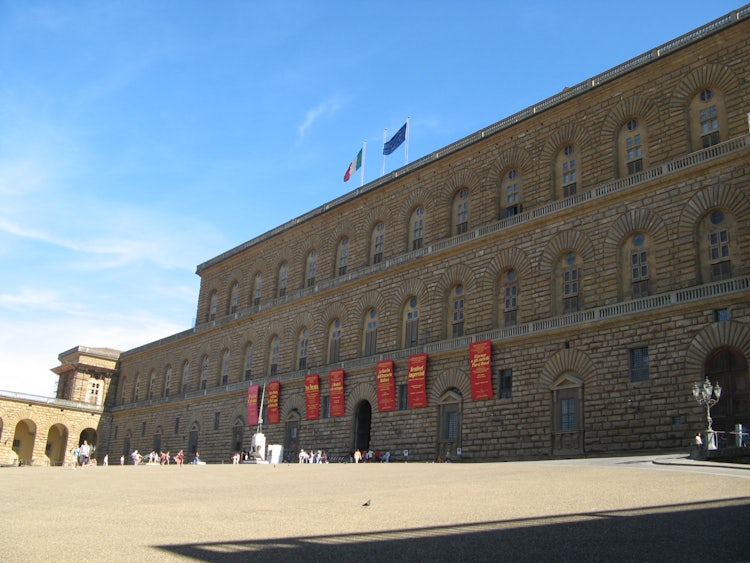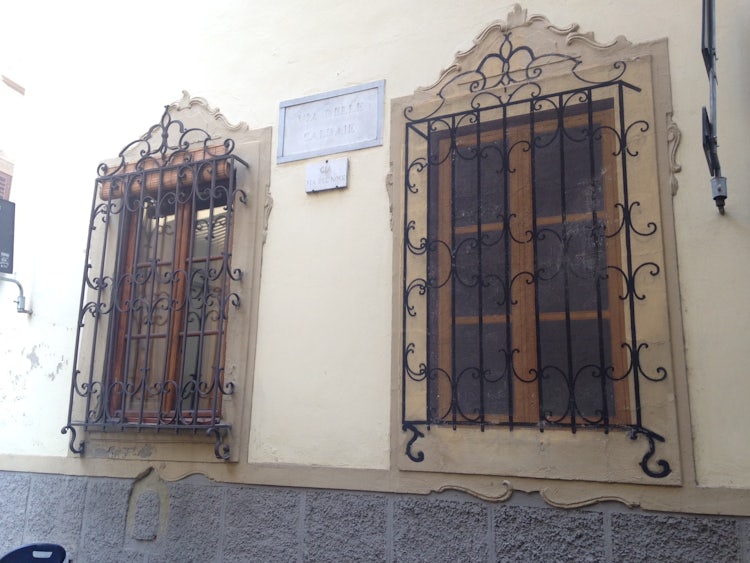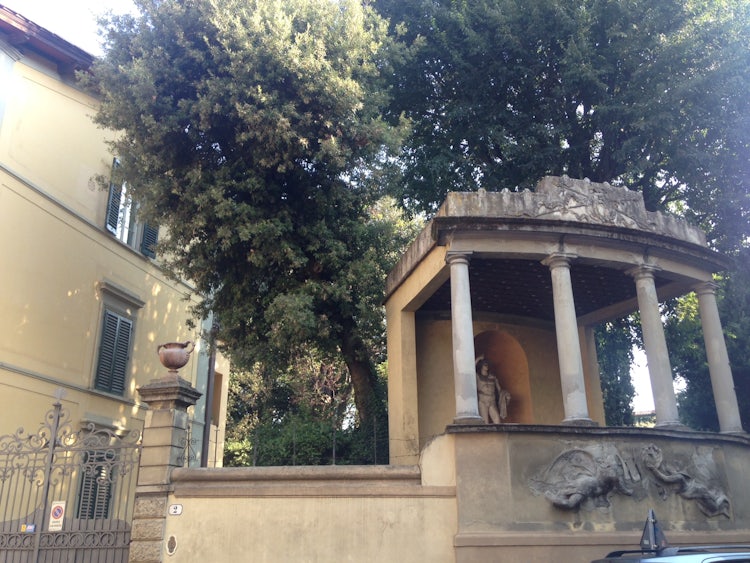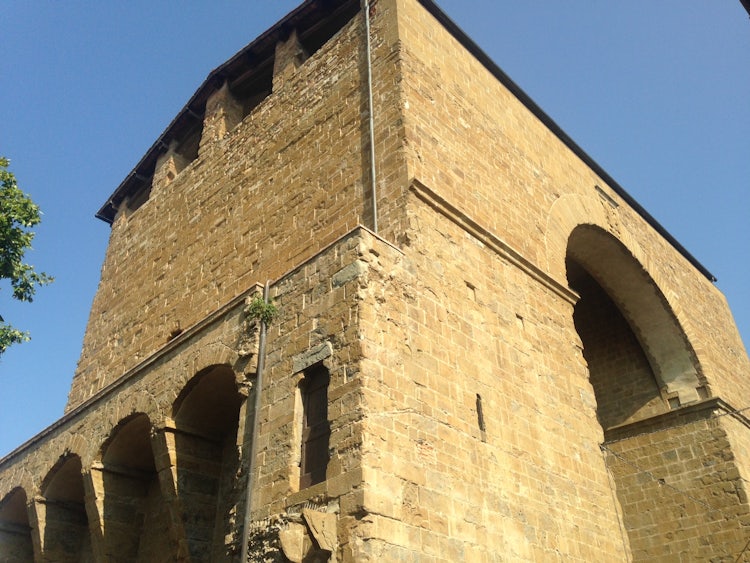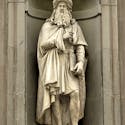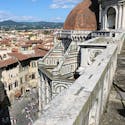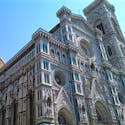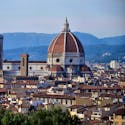As you decide where to wander to capture the authentic allure of Florence, consider the ever more popular, and accessible “Diladdarno”, also known as the Oltrarno. In Italian, this literally means the other side of the Arno River. It is a nickname given to this district by local Florentines, and a name which probably heralds back a few hundred, maybe even a thousand, years ago when the protective walls of the city did not reach beyond the banks of the Arno River.
Today, with the many bridges located in the city center, including the famous Ponte Vecchio, it is easy to cross the river and add this walking itinerary to your day's outing. Once we mapped it out, including photo stops and stops for important things such as gelato, espresso and/or a glass of wine, we found you can easily stroll the area in about 2 and a half hours.

Why would you want to leave the well-known historic center?
There are many reasons to venture south of the historical center: first, you'd be able to find a corner café where the locals still go to and get a second breakfast, the language that echoes in the streets is still mainly Italian, and the air seems to frizzle, just a bit, with the ancient Florence that resides in the monuments, churches, and hidden artwork.
The second reason: if you don’t, then you are really only seeing half of Florence.
Where to start?
You may just be surprised at how much of the story of the Renaissance city is actually hidden across the Ponte Vecchio. In this itinerary, we try to cover everything to the south of the bridge. Well, as the Italians say “everything” is a “parola grossa” … meaning that perhaps it is a bit exaggerated, but we will try our best to give you a comprehensive overview of “Diladdarno”.
Our intention is to tease you with just enough so that you wander further and find some things on your own!
1. PONTE VECCHIO
For our itinerary we are going to start with Ponte Vecchio - the only original bridge still standing in Florence after WWII. As you step off of the bridge into a crossroads that leads you deep into the “Diladdarno” you will notice an intriguing mix of tourist shops (t-shirts, Pinocchio dolls, cantucci, and wine, etc) but as you delve deeper into the area you will also walk by designer fashion stores, bottegas that make and sell “commesso fiorentino”, leather boutiques, shoes, gloves and several antique shops.
Though the landscape is changing, there are quite a few of the original artisan stores that still display their products with pride.
2. CHURCH of SANTA FELICITA’
You might stroll right by our first stop … and not even realize it. Look just a little bit past the Ponte Vecchio as you head to Palazzo Pitti, on your left.
The Chiesa di Santa Felicita, one of the oldest churches in Florence, hosts some very important artwork, namely the Deposition by Pontorno. Though there is no documented proof, the origins of the church appear to go as far back as the 2nd century when Syrian Greek merchants settled in the area bringing their religion.
Fun Fact: The bell tower to this church was actually a medieval tower home for the Fifanti family which had been transformed into a church bell tower. It is clearly visible from the Boboli Gardens.
If you look closely at the facade, you will note an unusual front porch probably designed to hide its original purpose: support for the famous Vasari Corridor passing above, right through the church. If you peek inside above the main entrance, you can see a grated window that hides an alcove where the Medici family could sit down and attend mass - they got there by following the corridor, without walking the streets of Florence.
3. PALAZZO PITTI
Back on the main street, you will find that it is impossible to miss the next monument, designed by Filippo Brunelleschi. That’s right, Palazzo Pitti. We did not calculate time in this itinerary to stop and visit the museums inside: there are several pluses at this stop including the monumental Boboli gardens behind this facade that are filled with amazing art, antique clothing, silver, and architecture.
When they started to build this grand palazzo, it is rumored that the new owner told the architect that the courtyard had to be as big as their arch-rivals entire house! As you stand in front of the Palazzo Pitti, try and imagine the grandeur this represented in the 1400s when it was built. It was truly impressive then and remains so today.
4. PIAZZA SANTO SPIRITO
Do an about-face and you will find yourself on one the much-celebrated little vias or streets of Florence, the Sdrucciolo de’ Pitti. It winds its way into the heart of the other side of the Arno to Piazza Santo Spirito and the church that dominates the square.
It is here that Michelangelo began his clandestine career as a "forensic scientist" studying dead bodies and it is here that you will find one of his earliest pieces of artwork, a Crucifix of Christ. The shady little square hosts weekly and monthly markets specialising in all kinds of goodies from outside the city walls. It is also the home to a wide range of restaurants - especially nice for outdoor dining, people watching or a bit of movida in the evenings.
5. A STROLL
Head south on the via delle Caldaie, a name which boasts of its connection to the Arte della Lana guild (known as the wool union). Caldaie means boiler, and this area is where they used to heat the water to dye wool cloth. We love the curious architecture, wrought iron windows, massive doors, and quiet streets. The road ends in front of the Goldoni Theater, originally a monastery established by Anna Elena Malatesta: she was the wife of Baldaccio d'Anghiari, a fearsome warrior in the 1400s, whose gruesome reputation and glorious victories had him escape a death sentence for kidnapping and murder! After the death of her only son, she converted her house into a convent.
Word has it that within this convent, both the father of Cosimo I and Tommaso Soderini are said to have found temporary asylum. The monastery was suppressed and converted to a theater in the spring of 1818, with 80 booths and sat 1600 spectators. Fully restored, it is one of the principal theatres in Florence today.
Let's continue: turn left in front of the theater and then right at the next corner.
6. GARDENS OF ANNA ELENA aka CORSI GARDENS
Good to Know: Visits are possible throughout the year but generally only on weekends. Admission is free. For reservations: +30 055 22 2348 / scarsellistefania@yahoo.it
Here you will find the entrance to this privately owned garden. The gardens were also part of the monastery of S. Vincenzo mentioned above and founded by Countess Anna Elena, daughter of Count Galeotto Malatesta, around 1441. In 1790, Marquis Tommaso Corsi purchased the land and instructed architect Giuseppe Manetti to design what can be considered the first English garden in Florence.
You may find it interesting to know this area was demolished when Cosimo I fortified the walls during the war against the Sienese in the 1500s. Once the war was over, the area was once again demolished and returned to the private sector. However, under these fortifications, Cosimo had built underground passages, connecting the gardens of Boboli, Corsi, and Torrigiani. This underground path, whose traces are still evident, allowed Cosimo I to go out undisturbed from Florence.
7. CHURCH of SAN PIER GATTOLINO
Rather a quiet little church now, the original structure of San Pier Gattolino was demolished to make way for the ramparts which Cosimo put into place during the siege of Florence. Once the siege was over, the church was rebuilt largely by a large donation by Ser Umido, the nickname sometimes accredited to the church.
This road comes to an end, and you will turn left.
8. TORRIGIANI GARDENS
Good to Know: Since this is a private garden, reservations are required: 055/224527 or info@giardinotorrigiani.it
The Torrigiani gardens, with nearly seventeen acres hidden in the heart of Florence, is the largest privately-owned garden in Europe situated within city boundaries. The entrance to these gardens is on your right. Even from beyond the walls, it is easy to see the curious neo-gothic tower - but I was unable to find it... so take a photo and send it to us if you can see it.
Almost 22 meters high, the tower is one of the most evocative elements of the Torrigiani Garden, as well as one of the undisputed symbols of the Florentine Oltrarno. Created by Gaetano Baccani, the structure has an unmistakable external spiral staircase, the top of which coincides with a small astronomical observatory.
The tower, placed on an artificial hillock, has in fact 3 distinct levels, along which the Marquis moved using a particular mechanical chair: in particular, the 3 levels represent the 3 degrees of initiation to the Masonic order, which more than any other what inspired the realization of this splendid garden of Florence.
9. PORTA ROMANA
If you were to follow the road down to the ancient gateway, you would be following one of the oldest roads that led to Rome, thus the name Porta Romana. However, in the early days, this gate actually wore the name of the church mentioned above.
To give you an idea of how monumental this door is, it appears in the list drawn up in 1901 by the General Directorate of Antiquities and Fine Arts, as a monumental building to be considered a national artistic heritage.
You will find a cute little bar with the perfect spot to people-watch right in front of this massive (and busy) entrance into the city.
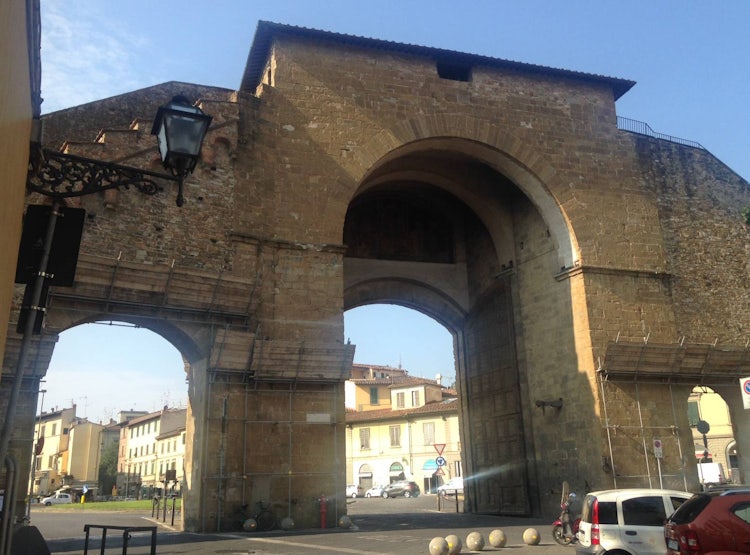
10. MUSEUM OF MASONIC SYMBOLS
Retrace your steps down via dei Serragli, until via Campuccio (turn left) and walk around the borders of the Torrigiani gardens - and if you didn’t get the opportunity to visit inside, maybe now you will catch a glimpse of the tower?
Turn on to via del Leone until via dell Orto. Here you will find a curious museum, not often on a visitors list of “must do’s”. It is especially intriguing after having seen the tower in the above-mentioned garden. Just in case you don’t understand the 3 degrees of initiation to the Masonic order, you can stop by this museum to the left for more information (only open in the afternoon).
11. CHURCH OF SANTA MARIA DEL CARMINE and CAPPELLA BRANCACCI
Without a doubt, this church needs to be visited, even if it is just to see the marvelous Cappella Brancacci. Though we can give you a few more reasons to stake a quick peek inside, read here.
Particularly beautiful, they have recently restored the square so that it is traffic-free, allowing you to truly appreciate its special position in the city.
12. PORTA SAN FREDIANO
The gate opens onto the road to Pisa, and it takes its name from the church San Frediano in Cestello nearby. It makes up part of the third circle of walls which were built with a project attributed to Andrea Pisano between 1332 - 1334. Based on its current size, it must have been the most majestic gate in the city walls, but remained unfinished in height; it was then lowered and strengthened in the years immediately preceding the siege of Florence to adapt it to the new military requirements imposed by the use of cannons and firearms of recent diffusion.
Unlike the area north of the Arno, the city walls were not demolished to make way for avenues (in the period 1865-1870 when Florence was capital city of Italy) and you can still see many original aspects. For example, next to the actual huge doors, there are openings made to facilitate the transit of people and things.
If you are on the side facing the city, at the top of the arch you can see the coat of arms of Florence carved in pietra serena. Once at the door, you can retrace your steps back to Viuzzo del Cestello. We also suggest as you stroll this area, a bit of a break at one of the little wine bars, restaurants with unique menu selections or even a micro-brewery and artisan beer shops along this street.
13. CHURCH of SAN FREDIANO IN CESTELLO
We love the story of the origins of this church, dedicated to St Fridianus (Frediano), an early Christian Irish pilgrim who became bishop of Lucca; apparently he miraculously crossed a flooded Arno river near this spot.
One of the best examples of late Florentine Baroque, it managed to overcome the obstacles that Cosimo III imposed when he slowed down construction in the seventeenth and eighteenth centuries. This church hosts a polychrome wooden Madonna and child (1350) by a follower of Nino, the son of Andrea Pisano.
Fun Note: Absolutely one of our favorite gelato stops, but we do encourage frequent sampling of other places. Just check out our gelato rankings if you need some assistance in choosing one.
While you enjoy your gelato, wander over to the middle of the bridge "alla Carraia". Here's some interesting notes on the bridge:
- Florence's bridges: Ponte alla Carraia
It was the second to be built after the Ponte Vecchio and its first name was Ponte Nuovo (New Bridge) and, yes, sometimes they did lack a bit of fantasy. The first mention of the bridge (then built in wood) dates from 1218. Destroyed by a flood in 1274, it was soon reconstructed but fell down again in 1304 under the weight of a crowd who had met on the bridge to watch a spectacle. It was the first bridge in the city rebuilt after the 1333 flood, perhaps under the design of Giotto. Again damaged in 1557, it was remade by the will of Grand Duke Cosimo I de' Medici, who assigned the project to Bartolomeo Ammannati.
Enlarged during the 19th century, the bridge was blown up by the retreating German Army during World War II (1944) and rebuilt in 1948.
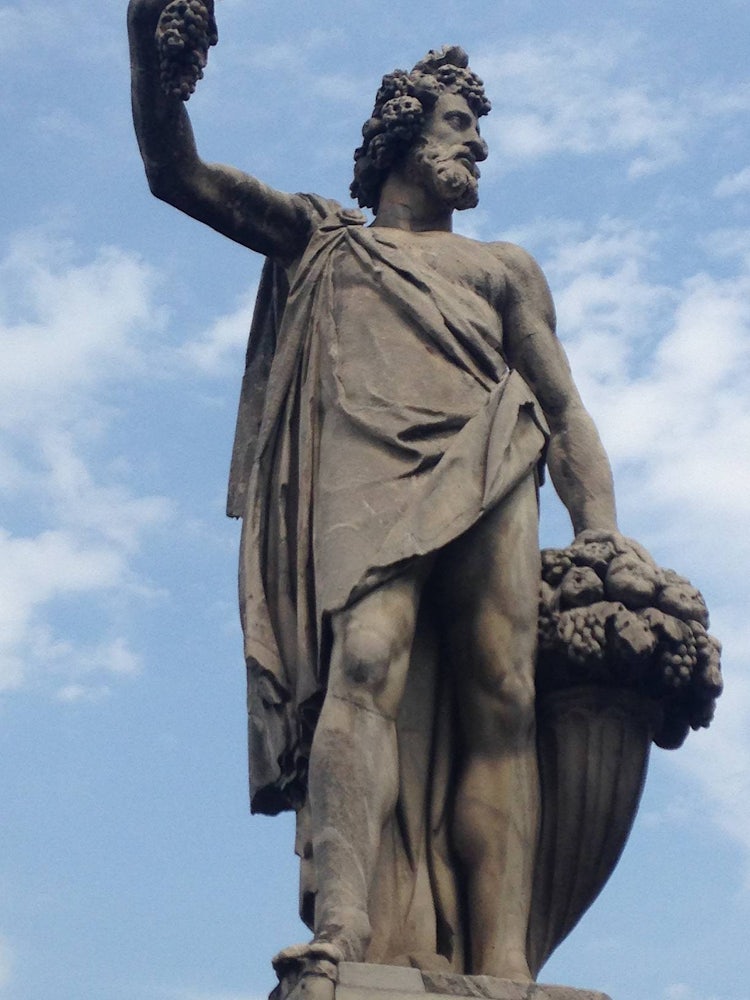
-
Florence's bridges: Ponte Santa Trinita
From where you are standing, you will have a great perspective of Ponte Santa Trinita. The Ponte Santa Trìnita is the oldest elliptic arch bridge in the world, characterised by three flattened ellipses. Its history follows much of Ponte all Carraia (above). A wooden bridge which was first mentioned in 1252, it was swept away in a flood seven years later. Rebuilt in stone; this structure was destroyed by a flood in 1333. The bridge of five arches constructed by Taddeo Gaddi was also destroyed in the flood of 1557, and replaced once more. Four ornamental statues of the Seasons were added to the bridge in 1608, as part of the wedding celebrations of Cosimo II de' Medici with Maria Magdalena of Austria. On the night between August 3-4, 1944, the bridge was destroyed by retreating German troops on the advance of the British 8th Army. The bridge was reconstructed in 1958 with some of the original stones raised from the Arno. The missing head of Primavera was recovered from the bed of the Arno in October 1961.
14. SPRONE FOUNTAIN
This masterpiece by Buontalenti (end of 16th Century) with a striking grotesque mask, is probably the most famous fountain in the Oltrarno. Just think, it dates back to 1608, when this area of ​​Florence was embellished by the passage of the wedding procession of Cosimo II de'Medici and Maria Maddalena of Austria.
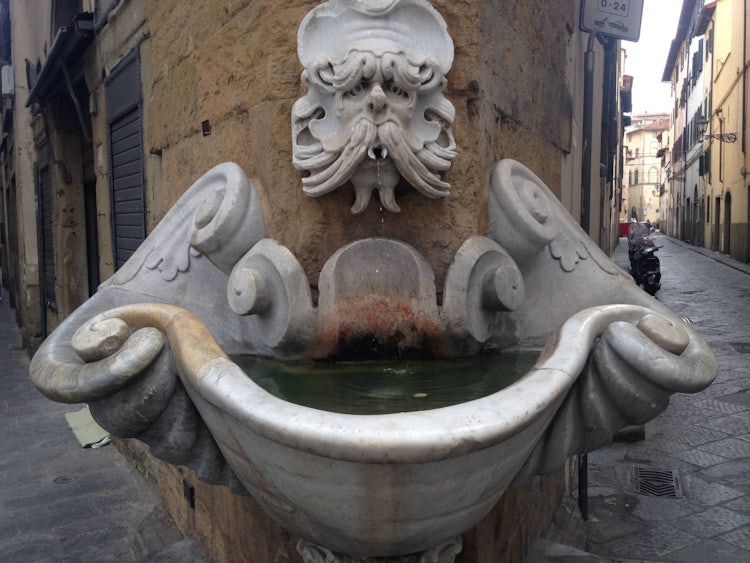
15. A STROLL BETWEEN THE TOWERS
If you stay to the left of the fork in the road you will pass by some medieval towers, marked with brown and white signs. Though most are privately owned, they still cast their shadows as you pass below to remind you of yesteryear.
- TORRE MARSILI
Dates back to the XII century when it was still outside the city walls!
- TORRE dei BELFREDELLI
Another which dates back to the XII century. Not only is this tower one of the oldest in Florence but it is also one of the tallest still standing.
- TORRE dei BARBADORI
Again one of the taller towers in Florence dating back to the XII century. Look above the pointed archway and you will see the original entrance door, which could be reached only with a retractile wooden ladder/staircase.
At this point, you are nearing your starting point, the Ponte Vecchio is just ahead. Did you enjoy the walk across the Oltrarno?
